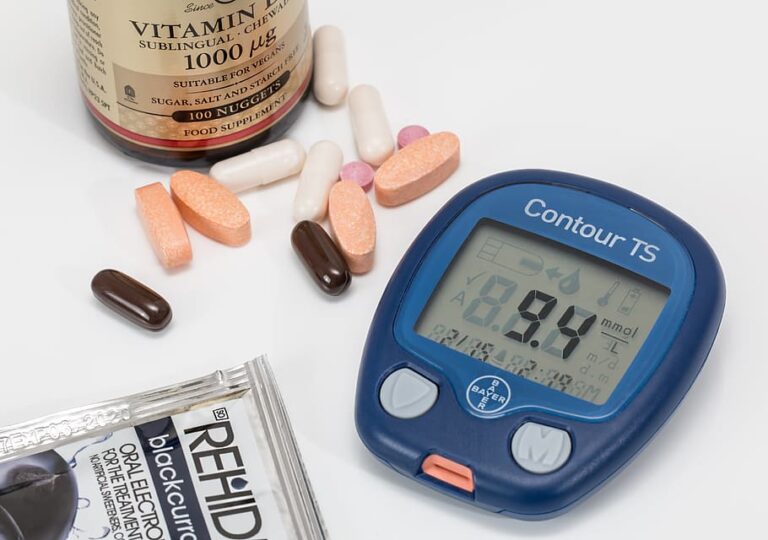
With one in six people with diabetes in the world living in India, the country has become known as the diabetes capital of the world. Diabetes is a disease that occurs when your blood glucose, also called blood sugar, is too high. Blood glucose is your main source of energy and comes from the food you eat.
Diets with a low glycaemic index (GI) are known to reduce risks of various diseases. Low GI intake in a single meal also has proven to limit the postprandial glycemic response (PPGR) to a subsequent meal; a concept termed the “second meal effect.”
Consuming a high protein and fiber diet prior to breakfast, results in almost 40 % reduction of PP glucose increment.
In type 1 or insulin dependent diabetes, patients taking a premeal before the breakfast, sometimes help in reduction of insulin doses as the risk of hyperglycemia or blood sugar level decreases subsequently.
Similarly in type 2 diabetes, the medicine doses also reduces significantly.
So diabetic patients need to be selective regarding food they eat to procure good results .
Fruits and vegetables
-Having diabetes doesn’t mean you can’t have fruits. Fruits and vegetables are naturally low in calories and are packed with lots of vitamins, minerals and fibre. They also add flavour and variety to every meal.
-Aim for a rainbow of colours to acquire benefits of various vitamins and minerals . Try to avoid fruit juices as they don’t have much fibre content. Also, try to avoid certain fruits like mangoes, lichis, jackfruits, sapota, green grapes, bananas from your diet. However, sometimes it can be an exception.
Protein foods like beans, nuts, pulses, eggs, meat and fish
Meat and fish are high in proteins, which keeps your muscles healthy. But a healthy diet means less red and processed meat since they are often linked to cancer and heart diseases. Oily fishes like mackerel, salmon and sardines have a lot of omega-3 oil, which helps to protect the heart.
Starchy foods
Starch-rich foods like potatoes, rice, pasta, bread, chapattis, naan and plantain contain carbohydrate, which is broken down into glucose and used by our cells as fuel. The problem with some starchy foods is that it can raise blood glucose levels quickly, which can make it harder for you to manage your diabetes. These foods have high glycaemic index (GI) –A good alternative over starchy foods is the one which affects blood glucose levels more slowly or in other words, foods with a low glycaemic index (GI), like wholegrain bread, whole-wheat pasta and , brown or wild rice should be preferred. Apart from low GI, they are supplied with surplus fibre, which helps to keep your digestive system healthy. So if you’re trying to cut down on carbs, avoid white bread, pasta and rice first.
Dairy foods and alternatives
Milk, cheese and yogurt are good sources of calcium and protein. Thus, it is great for your bones, teeth and muscles. But some dairy foods are also high in fat, particularly saturated fat, so try and choose the one with low fat.
Check for added sugar in lower-fat versions of dairy foods, like yogurt. It’s better to go for unsweetened yogurt and add some berries if you want to make it sweet. If you prefer a dairy alternative like soya milk, choose the one that’s unsweetened and calcium-fortified.
Oils and spreads
We need some fat in our diet but it should be unsaturated fat. This is because saturated fats can increase cholesterol in the blood, resulting in more heart diseases and strokes. The unhealthy options include: butter, palm nut oil and coconut oil.
Whereas healthier saturated fats includes: olive oil, vegetable oil, rapeseed oil, and spreads made from these oils, and nut butters.
Foods high in fat, salt and sugar
None of the foods high in fat, salt and sugar are required in a healthy diet. It is better to either avoid these or consume in a very low quantity occasionally as they adversely impact our body Foods such as: biscuits, crisps, chocolates, cakes, ice cream, butter and sugary drinks are high in calories, unsaturated fats and increase blood sugar levels, cholesterol which affects heart. Hence, you can opt for light or low-calorie alternatives. And the best drink to choose is water since it’s calorie free.
Tips for cutting these out
• Cook more meals from scratch at home, where you can control the amount of salt you use.
• Check food labels – look for green and orange colours. Reading labels help you to learn about the ingredients.
• Try unsweetened teas and coffees – they’re better than fruit juices and smoothies as they don’t add any extra calories and carbs.
• Banish the salt shaker from the table – black pepper, herbs and spices are great ways of adding extra flavour to your food.
• Replace the readymade ketchups/dressings and start preparing your own sauces, like tomato ketchup and tandoori marinades.
Below is an array of fruits, vegetables, grains, mixed foods with low glycemic index:
low-Glycemic Fruit
• Apples
• Dried apricots
• Under-ripe banana
• Peaches
• Strawberries
• Oranges
• Cherries
• Pears
• Plums
Low-Glycemic Vegetables
• Carrots
• Green peas
• Onions
• Lettuce
• Greens (spinach, kale, collards, beet)
• Green beans
• Tomatoes
• Cucumbers
• Bok choy
• Mushrooms
• Cabbage
• Broccoli
• Cauliflower
• Celery
• Eggplant
• Peppers (bell peppers, jalapenos, serrano, etc.)
Low-Glycemic Grains
• Barley
• Whole wheat kernels
• All-bran and Fiber One cereals
• Oat bran and rice bran cereals
• Whole grain atta/ foods
Low-Glycemic Dairy Products and Dairy-Substitute Products
• Skim, low-fat, and whole milk
• Plain yogurt
• Cheese (cheddar, swiss, mozzarella, brie, feta, blue, goat, etc.)
• Cottage cheese
• Soy milk and yogurt
Low-Glycemic Legumes
• Beans (chickpeas, kidney beans, pinto beans, black beans, navy beans, etc.)
• Split peas, black-eyed peas
• Lentils
• Home made chutney and dips
• Tofu and soy-based meat substitutes
Low-Glycemic Nuts and Seeds
• Peanuts
• Nuts (walnuts, macadamias, hazelnuts, almonds, cashews, etc.)
• Peanut butter
• Nut butter
• Seeds (pumpkin, sunflower, chia, flax, etc.)
Other/Mixed Foods
• Dark chocolate and 100% (unsweetened) chocolate
• Chili with beans
• Sandwich on whole-grain bread with meat/tuna/cheese and vegetables
• Peanut butter sandwich on whole-grain bread
Low-Glycemic, Less-Nutritious (Limit These)
• Snickers bar
• Pizza
• Tacos
• Banana bread
• Muffins
• Egg rolls
Recent Post
Crafted by Webcreatore Digital Solutions LLP.






